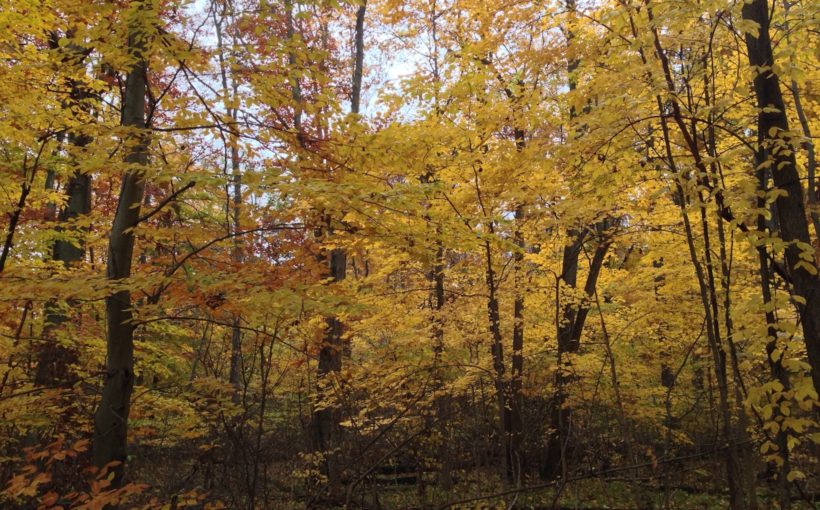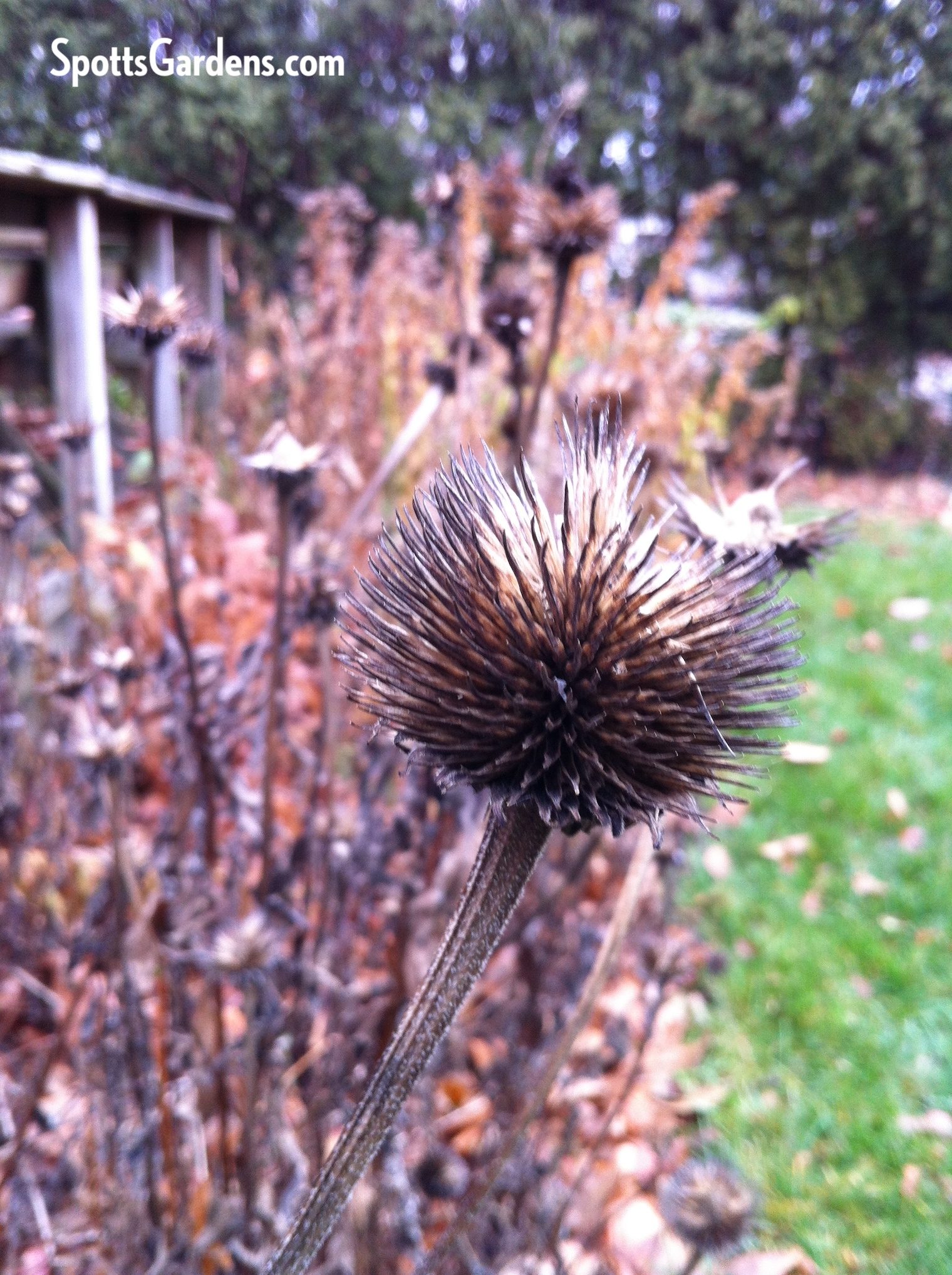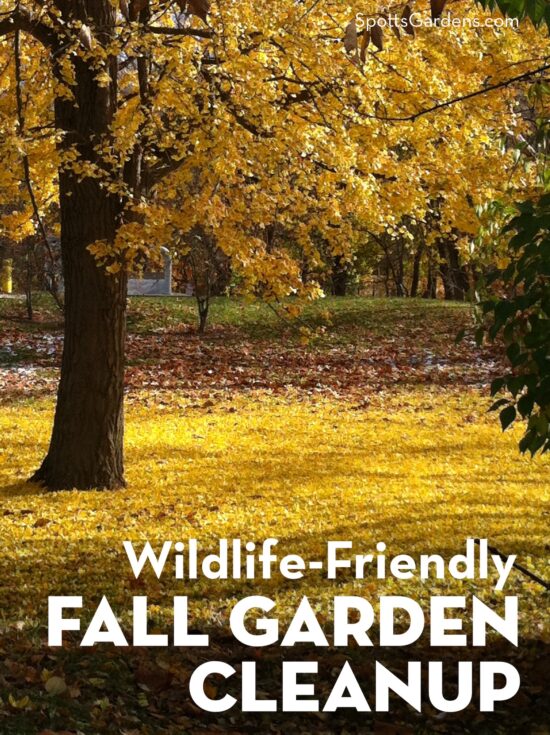At the end of the growing season, we start tucking the garden in for winter. We know the health of the garden depends on doing our fall garden cleanup in a smart, strategic way. We want to remove anything that may promote disease, but leave enough to shelter wildlife, protect plant crowns, and feed birds.
Spotts Garden Service can prepare your landscape for winter! Contact us today for a free estimate for a fall garden cleanup of your Indianapolis garden. Here’s how we do it:
Leave up as much as possible.
Anything with seedheads stays up to provide food to birds and wildlife. Dried stalks also stay up; they provide hibernating spots for insects. Many plants show green growth (basal leaves) this time of year, so we leave those alone. And if we really have to cut a flopping plant back, we leave a substantial part of the growth to cover the crown through the winter.
We leave grasses standing through the winter to add structure and movement to the winter garden, provide food for seed-eating birds, and shelter valuable insects. Flopping grasses can be encouraged to stand upright again by cutting a ring to about half-height around the outside of the grass. The stems of the short-cut grasses will hold up the tall grass stems in the middle.
Cut down diseased plants.
We remove any perennials that show signs of disease. Peony foliage should always be removed and thrown away (not composted) because it carries a fungal disease that can winter over. We also cut down and throw away the foliage of other plants with fungal issues, including rust-spotted hollyhocks and powdery mildew-bedecked phlox. Iris borers live in the overwintered foliage of German (bearded) iris, so that’s another one to cut down and remove.
We always clean up especially well and throw away debris around fruit trees. Shrubs and trees exhibiting signs of fungus get the same treatment. We also remove any dry fruit from the trees; these “mummies” may allow fungus to hold on through winter.
Keep the leaves in your garden.
You may have heard to “leave the leaves” in on your property, instead of bagging them. We agree! But don’t leave a thick layer of whole leaves lying around in your beds and lawns. A thick layer of leaves right off the tree is fine in a woodland, but not in a lawn or garden. A mat of fallen leaves covering garden plants can rot their crowns.
Instead, we prefer to use these strategies:
- Rake the whole leaves into one specific area of the garden where they can remain undisturbed until spring. The Xerces Society for Invertebrate Conservation recommends this as the most beneficial approach for insects and other invertebrates. Those tiny garden residents may have already laid eggs in the fallen leaves.
- Rake or blow the leaves into the lawn and run over them with a mower a couple of times. A light layer of leaf chips won’t smother the lawn, and it will return nutrients to the soil as it breaks down.
- If we have a very thick layer of leaf chips, we’ll remove some. But wherever possible, we return chipped leaves to the borders to act as mulch, build soil, and provide a spot for insects to hibernate. We might also pile chipped leaves either to rot down into leaf mould or to add to the compost heap over the winter.
Remove and store man-made objects.
Winter’s freeze-thaw cycle is hard on anything porous, like terra cotta pots, ceramic statuary, and birdbaths. While we like to leave some large pots out (wrapped against the cold and decorated with winter greens), anything prone to damage is removed from the garden and stored.
In our own gardens, we put away outdoor furniture, scrub and store pots, and drain and store the garden hose. We also empty rain barrels and leave the spigot open—any water that gets in will drain out harmlessly.
Put away the pruning saw.
We might remove dead wood this time of year, but we generally leave trees and shrubs strictly alone. We won’t start pruning these again until mid-winter at the earliest.
We also stack wood into small piles in an out-of-the-way spot. These fallen branches and rotting logs provide yet another winter habitat for insects and other wildlife.
With these fall garden cleanup strategies, you’ll create a yard that looks beautiful and interesting during the winter months, enhances plant health, and provides for wildlife. And you can look forward to watching the birds in your garden this winter!
Schedule a fall cleanup in your Indianapolis garden today! Contact us for a free estimate.


